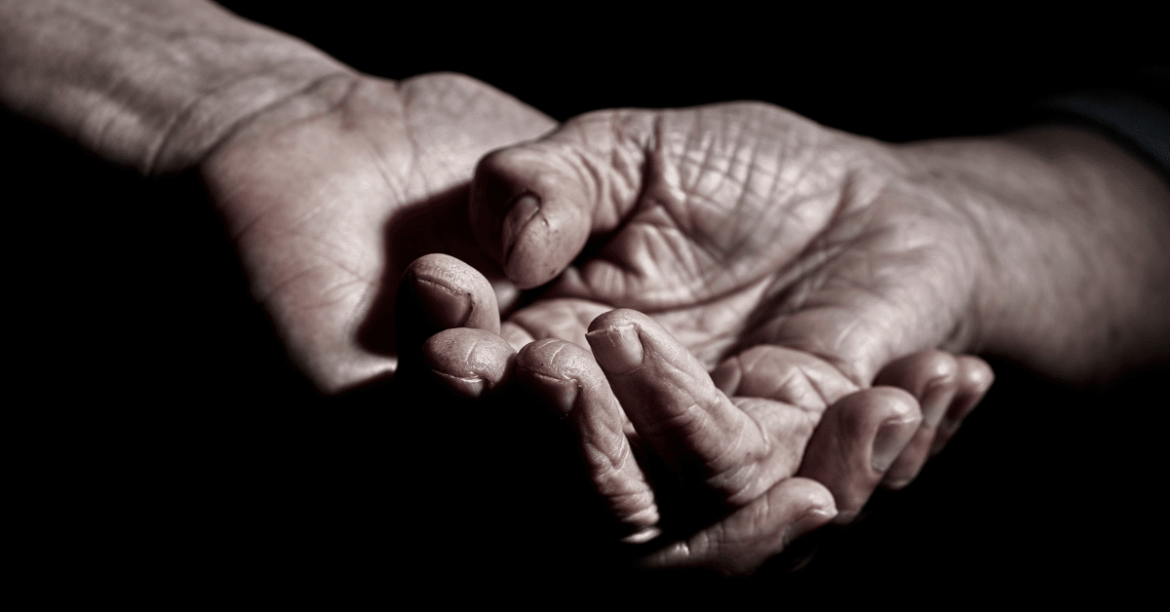In the tender moments when life’s journey draws to a close, there is an extraordinary opportunity to provide compassionate end-of-life care at home. It is a time when love, empathy, and kindness can weave together to create a sanctuary of comfort and solace.
This blog will explore the depth and breadth of compassionate end-of-life care at home. Join us in navigating the path of providing comfort and support during this significant phase, embracing the transformative power of compassion.
What is end-of-life care?
End-of-life care encompasses a range of supportive services and interventions provided to individuals who are in the final stages of a terminal illness or nearing the end of their lives. It aims to enhance the quality of life for both individuals and their families, focusing on physical comfort, emotional well-being, and dignity during this profound transition.
At home end-of-life care encompasses a range of supportive services and interventions provided to individuals in the final stages of a fatal disease or near the end of their lives. The goal is to ensure that individuals and their families experience a compassionate and dignified journey, surrounded by a supportive network of care tailored to their unique needs and preferences.
Is it possible to provide end-of-life care at home?
It is very much possible to provide end-of-life care at home. In fact, many individuals strongly desire to spend their final days in their home’s familiar and comforting surroundings. Home-based end-of-life care offers a unique opportunity to create a personalized and intimate environment that promotes comfort, emotional well-being, and a sense of dignity.
However, it is essential to note that providing end-of-life care at home requires careful planning, coordination, and access to appropriate resources and support systems. Working closely with healthcare professionals, hospice services, and community resources can help ensure that the necessary medical, emotional, and practical needs are met effectively.
10 things to consider while providing end-of-life care at home
When providing end-of-life care at home, several important factors should be considered to ensure the comfort, well-being, and safety of the individual. Here are some key things to consider:
- Caregiver support: Assess the availability and capabilities of family members or caregivers who will be involved in providing care.
- Home environment: Evaluate the home environment for safety and accessibility. Make necessary modifications, such as installing grab bars, ramps, or medical equipment, to ensure the individual’s comfort and mobility.
- Medical support: Collaborate with healthcare professionals, including doctors, nurses, and private caregivers, to establish a comprehensive care plan. Ensure access to necessary medical supplies, medications, and equipment.
- Pain and symptom management: Work closely with healthcare professionals to develop an effective pain management plan.
- Emotional and psychological support: Recognize the emotional challenges individuals and their loved ones may face during this time. Encourage open communication, active listening, and the expression of emotions.
- Communication and decision-making: Engage in open and honest conversations about the individual’s wishes, values, and end-of-life decisions.
- Personalized care: Tailor the care approach to the individual’s preferences and needs. Respect cultural, religious, and spiritual beliefs, and incorporate rituals or practices that hold significance for the individual.
- Caregiver self-care: Caregivers must prioritize their own well-being to maintain their ability to provide effective care. Take breaks, seek support from others, and engage in self-care activities to prevent burnout and maintain physical and emotional health.
- End-of-life documentation: Ensure that necessary legal and administrative documents are in order, such as advance directives, healthcare proxies, and wills to ensure that the elderly person’s end-of-life decisions are being honored.
- Bereavement support: Recognize that end-of-life care extends beyond the individual’s passing. Make arrangements for bereavement support for family members and caregivers to help them navigate the grieving process.
What are the benefits of nurturing end-of-life care at home?
End-of-life care provided at home offers several benefits for both individuals and their families. Some of the key benefits of end-of-life home care include:
1. Comfort and familiarity
Being in the familiar surroundings of home can provide a sense of comfort, security, and peace for individuals during their final days. They are surrounded by their own belongings, memories, and loved ones, fostering a greater sense of well-being.
2. Personalized care
Home-based end-of-life care allows for highly personalized care tailored to the individual’s specific needs, preferences, and values. It offers the opportunity to create a care plan that aligns closely with their wishes, ensuring their physical, emotional, and spiritual well-being is prioritized.
3. Emotional and psychological support
Being at home enables individuals to receive emotional and psychological support from their loved ones in a familiar and intimate environment. They can freely express their emotions, engage in meaningful conversations, and receive comfort from their support network, which can greatly enhance their emotional well-being.
4. Enhanced quality of life
Home-based end-of-life care focuses on maximizing the individual’s quality of life in their final days. It aims to manage pain and symptoms effectively, promote comfort, and support the pursuit of meaningful activities and experiences. This can contribute to a greater sense of fulfillment and dignity during this time.
5. Family involvement and connection
End-of-life care at home encourages the involvement of family members and loved ones in the caregiving process. It allows them to actively participate in the care, spend quality time with their loved one, and create lasting memories. This can strengthen family bonds, provide a sense of purpose, and facilitate meaningful connections.
6. Continuity of care
By receiving care at home, individuals can maintain continuity in their care team, including healthcare professionals and hospice services. This facilitates a close and ongoing relationship with the care providers, ensuring comprehensive and coordinated support throughout the end-of-life journey.
7. Sense of control and autonomy
Home-based end-of-life care empowers individuals to maintain a sense of control and autonomy over their own lives, even in their final stages. They can actively participate in decision-making, express their preferences, and have their wishes respected, fostering a greater sense of dignity and empowerment.
Challenges in end-of-life care at home
While end-of-life care at home offers numerous benefits, it also presents some challenges that need to be considered. Here are a few common challenges in end-of-life care at home:
1. Caregiver burden
Providing end-of-life care at home can place a significant physical, emotional, and financial burden on family caregivers. The responsibilities of caregiving can be demanding and overwhelming, potentially leading to caregiver stress, exhaustion, and burnout.
2. Complex medical needs
Some individuals requiring end-of-life care may have complex medical needs that require specialized knowledge and skills. Managing medications, administering treatments, and handling medical equipment at home can be challenging for family caregivers who may not have medical training.
3. Lack of professional support
While home-based end-of-life care often involves the assistance of healthcare professionals and hospice nurses, the availability and frequency of their visits may not be sufficient to address all the needs and concerns of the individual and family. Limited access to professional support can pose challenges in managing symptoms, providing emotional guidance, and making informed decisions.
4. Limited resources
Home environments may not have all the necessary resources and equipment readily available to provide optimal end-of-life care. This can include specialized medical equipment, such as hospital beds or mobility aids, as well as access to certain therapies or treatments that may be more readily available in healthcare facilities.
5. Social isolation
Providing end-of-life care at home can sometimes lead to social isolation for both the individual and the caregivers. The demands of caregiving may limit opportunities for social interaction and engagement with the outside world, potentially impacting the emotional well-being of all involved.
6. Emotional and psychological impact
Caring for a loved one at the end of life can be emotionally challenging for family caregivers. Witnessing their declining health, dealing with grief and anticipatory loss, and navigating complex end-of-life decisions can take a toll on their emotional well-being.
7. Emergency situations
Despite careful planning, unforeseen emergencies can arise during end-of-life care at home. Dealing with medical emergencies, managing acute symptoms, and accessing immediate medical assistance can be more challenging compared to being in a healthcare facility.
Addressing these challenges requires proactive planning, open communication, and access to appropriate support systems. Seeking respite care, engaging in caregiver support groups, and collaborating closely with healthcare professionals and hospice services can help alleviate some of these challenges and ensure the best possible care for individuals at the end of life.
Final thoughts
End-of-life care provided at home allows individuals to spend their final days in a familiar and nurturing environment surrounded by loved ones. However, it also has some challenges. But with careful consideration and the right resources in place, home-based end-of-life care can be provided.
We hope this guide will be a beacon of guidance, offering insights and practical advice on creating a nurturing and compassionate environment for our loved ones during their final chapter.
FAQs
Who pays for end-of-life care at home?
The funding for end-of-life care at home can vary depending on individual circumstances. But some common methods of paying for end-of-life care include:
- Private pay or paying out of pocket
- Health insurance plans
- Government-funded programs
- Veteran’s benefits
- Family funds
- Funded by charity organizations or religious organizations
Is it possible to provide end-of-life cancer care at home?
Yes, it is possible to provide end-of-life cancer care at home. However, it requires careful planning, coordination with healthcare professionals, and access to appropriate resources.
What does end-of-life dementia care at home entail?
End-of-life dementia care at home usually entails:
- Comfort and safety measures
- Symptom management, including agitation and confusion
- Personalized care tailored to individual needs and preferences
- Emotional support for individuals and their families
- Nutritional support and meal planning
- Access to palliative and hospice care services
- Support and respite for family caregivers
What is private end-of-life care at home?
Private end-of-life care at home involves personalized care provided by skilled caregivers, offering flexibility and continuity of support. It includes services tailored to individual needs, such as medical assistance, emotional support, and coordination with healthcare professionals. Costs are typically covered through private health insurance or out-of-pocket payments.

